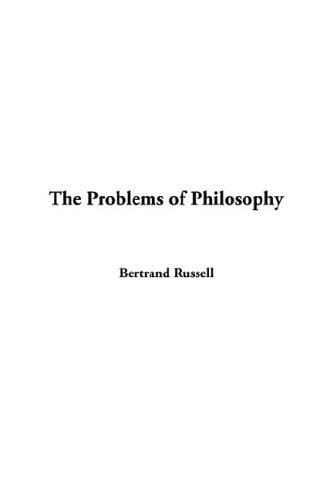Meditations: Timeless Wisdom from Marcus Aurelius for Modern Life
Explore the enduring wisdom of Marcus Aurelius' Meditations and learn how Stoic practices can help you cultivate resilience, clarity, and purpose today.

Introduction: Why "Meditations" Still Matters
Written nearly two millennia ago, "Meditations" by Roman emperor Marcus Aurelius remains one of the most influential works of philosophy ever composed. Intended as a private journal, its pages reveal a candid record of the ruler’s struggle to live in accordance with the principles of Stoicism. Today, readers continue to turn to the text for practical guidance on resilience, ethical living, and mental clarity. This article explores the key themes of "Meditations," explains how they apply to contemporary challenges, and offers actionable steps to integrate Stoic insights into your daily routine.
The Stoic Framework Behind "Meditations"
Stoicism teaches that while we cannot control external events, we can always control our judgments and reactions. Marcus Aurelius distilled this core doctrine into concise reflections, reminding himself to remain rational, virtuous, and emotionally balanced. Understanding this framework is essential for interpreting the work’s many aphorisms:
- Virtue is the highest good. A Stoic judges success by character, not circumstance.
- Control what you can. The dichotomy of control urges us to focus on our thoughts and actions, letting go of what lies beyond our influence.
- Live according to nature. By aligning with reason—the distinctive human capacity—we fulfill our natural purpose and find lasting contentment.
Key Themes and Lessons
1. Impermanence and Perspective
Marcus constantly reminds himself that life is fleeting: "Time is a river, a violent torrent of events, glimpsed once and carried away." This meditation encourages readers to zoom out, recognize the brevity of existence, and avoid becoming enslaved by trivial worries. By contemplating impermanence, you can free yourself from petty anxieties and focus on what truly matters—building character and serving others.
2. The Inner Citadel
Perhaps the most famous Stoic image in "Meditations" is the inner citadel, a fortified mental space that remains unassailable by external chaos. Marcus asserts that any insult, loss, or misfortune can harm us only if we allow it to breach this inner fortress. Cultivating such resilience begins with mindfulness: notice emotional impulses, label them, and decide whether they align with reason before you act.
3. Universal Brotherhood
Although he ruled an empire, Marcus frequently wrote about the interconnectedness of all people: "What is not good for the beehive cannot be good for the bee." This theme challenges today’s hyper-individualistic mindset, reminding us that genuine fulfillment arises from cooperation, empathy, and communal well-being. Practicing kindness and fairness is not merely altruistic; it anchors your own serenity.
4. Acceptance Without Resignation
Stoic acceptance is often confused with passivity. "Meditations" clarifies the difference: accept what you cannot change, but vigorously engage with what you can. When illness, economic downturns, or social upheaval strike, a Stoic acknowledges reality, reframes obstacles as opportunities for virtue, and then takes measured action. This balanced stance prevents despair while fueling constructive effort.
Practical Ways to Apply "Meditations" Today
Reading philosophy is one thing; embodying it is another. Here are concrete exercises inspired by Marcus Aurelius that you can incorporate into your routine:
- Morning reflection. Begin each day by silently reviewing three anticipated challenges. Visualize responding with patience, courage, and integrity.
- Evening journaling. Like Marcus, keep a nightly log. Note where you acted in harmony with Stoic values and where you faltered. This habit strengthens self-awareness and accountability.
- Negative visualization. Periodically imagine losing a possession, status, or relationship. Far from morbid, this practice heightens gratitude and softens the shock of real loss.
- Voluntary discomfort. Skip a luxury, take a cold shower, or fast for a day. Choosing minor hardships inoculates you against future adversity and sharpens appreciation for what you have.
- Mindful pause. When emotions surge, pause for a single breath. Ask: "Is this within my control?" Redirect energy toward what you can influence.
Common Misconceptions About "Meditations"
Because Stoic writing is concise, modern readers sometimes misinterpret its intent. One myth paints Stoicism as emotionless suppression. In fact, Marcus does not deny feelings; he aims to prevent destructive passion from overriding reason. Another misunderstanding is that "Meditations" offers a rigid moral code. Instead, it provides flexible principles adaptable to diverse cultures and eras.
Why "Meditations" Resonates in the Digital Age
In an era of information overload, social comparison, and constant distraction, the clarity and calm of "Meditations" feel revolutionary. Its emphasis on focusing only on what is within our control counters the anxiety fueled by news cycles and social media. Its reminder to cultivate inner virtue rather than external validation provides an antidote to the metrics-driven culture of likes and followers. Ultimately, Marcus Aurelius speaks to a perennial human need: finding tranquility amid uncertainty.
Conclusion: The Ever-Relevant Emperor
"Meditations" endures because it does not promise quick fixes; it offers timeless guidelines for rigorous self-examination and compassionate action. By internalizing its lessons—impermanence, the inner citadel, universal brotherhood, and proactive acceptance—you equip yourself to meet modern challenges with wisdom and dignity. Whether you are a student, entrepreneur, parent, or leader, the Stoic emperor’s private notes can become your public roadmap to a calmer, more purposeful life.



